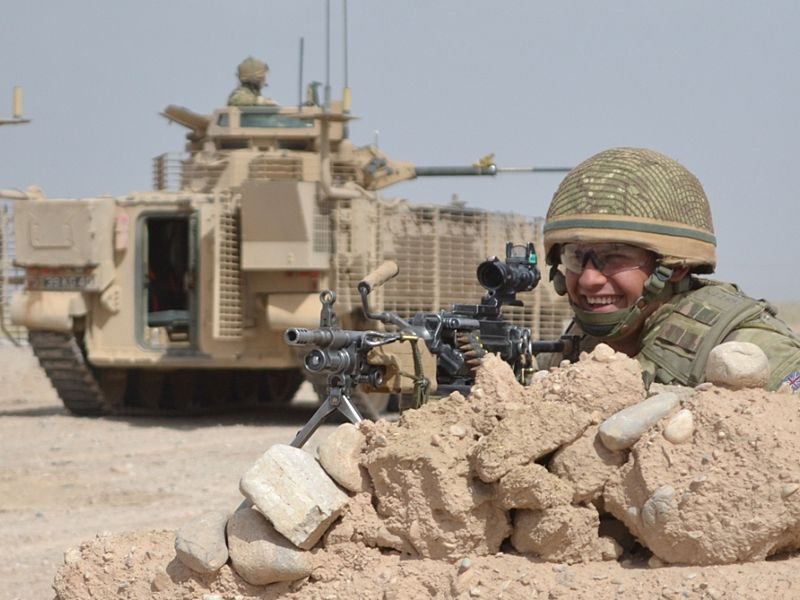Peter Luff, Minister for Defence Equipment, Support and Technology, has outlined his vision for the future of infantry equipment, with adaptability being the main theme.
In a speech to the Modern Infantry Conference and Exhibition at Bisley in Surrey, Mr Luff said the quest for the right mix of mobility, protection and firepower will continue to drive infantry equipment acquisition. But added that there will also be differences as the Armed Forces are taken to the next level of fighting effectiveness.
To view the full transcript of Mr Luff’s speech, see the Related Links at the right-hand-side of this page.
He said there would be a new structure for the Army, new equipment, and a better way of acquiring and supporting that equipment, but that the crucial component would be adaptability:
“In this volatile world, everyone in Defence – including the infantry – will need to be adaptable as the character of war continues to evolve,” Mr Luff said.
He said that the economic environment and previous problems with acquisition had posed problems:
“If you want to equip and support them to a first-class standard – which it’s my job to do – then you need a force structure that’s fit for the 21st century, and a defence programme which is affordable and sustainable.
“That’s precisely what the Strategic Defence and Security Review [SDSR] has started to do,” said Mr Luff.
“For the Army, the vision is a force structure equipped to operate successfully across the range of possible conflicts we are likely to face in the coming decades.”
Mr Luff confirmed that by 2020 it is envisaged that the country would have a total trained Army of 112,000, of which roughly 70 per cent will be Regular and 30 per cent Reserves:
“That will require a reduction in regular manpower, and a potential increase of up to 10,000 trained reservists. Neither the reduction nor the growth is risk or challenge-free. But achieving this is essential if the Army is to adapt to life in a volatile world.”
The Minister said that the Army, including the infantry, will almost certainly need to engage more broadly overseas in conflict prevention, and be able to assist in relief operations and support the authorities here at home; and the Army’s equipment programme necessarily needs to remain fluid until the future Army structure is agreed.
“For the Army, the vision is a force structure equipped to operate successfully across the range of possible conflicts we are likely to face in the coming decades.”
Peter Luff
He added that the Army had often suffered from more ‘salami-slicing’ compared to the other Services due to Army programmes typically spending less time in development, and units are measured in the hundreds or even thousands rather than the longer term small unit programmes of the Navy and Air Force:
“This is compounded because manpower levels – rather than warship numbers and fast jet fleets – are seen to be the measure of relative Army success or failure in any cuts to Defence,” said Mr Luff.
He added that, although the campaign is far from over, the MOD has also to begin managing the legacy of Afghanistan:
“For example, as we plan for the drawdown of combat operations, we are considering which Urgent Operational Requirement [UOR] vehicles should be brought into the MOD’s core equipment programme.
“UOR acquisitions have made a vital contribution to the success of Operation HERRICK, and they have typically been brought into service on or before schedule. But now the incoherence – in fact, downside – of UORs becomes clear.
“They were procured for ‘the War’, not ‘a war’. Hard-headed realism will be required as the Army considers how to marry its future core vehicle requirement against the fleets of vehicles already in service. And we must remember that the best must not be the enemy of the good. These are battle-proven.”
On Defence Reform, Mr Luff said that the Service Chiefs now have the power to deliver and will be held rigorously to account for doing so.
Turning to the infantry specifically, the Minister conceded that there is a school of thought which believes that the infantry have been relegated to second-class citizens as governments prefer to use Special Forces, but added that he did not believe that’s true:
“We all recognise and value the increased role of Special Forces, but they have a specific role which relies on secrecy, stealth and surgical insertion.
“A counter-insurgency strategy, on the other hand, requires boots on the ground: visible to the local community and engaging with them; visible to the enemy and destroying them.”
He said that he recognises that the Army has not been well served over the last couple of decades, but, today, the view that’s reported back to him from Afghanistan is that the British infantryman has never been so well equipped, supported, and protected:
“That’s a message we need to take proudly to the British people. I don’t rest on these laurels and there are still plenty of enhancements to come. But the point is that the issues of real and serious concern have been addressed.
“On top of this, new equipment arriving in theatre will have adaptability at its very core. And core capability is precisely what it is.”
Using the examples of Foxhound and the updated Warrior fighting vehicle, Mr Luff said these were the future, now, and showed a capability that is ‘adaptability-heavy’:
“I believe we can look at the infantry of today and the infantry of the future with greater confidence than has been the case for many years.”
He concluded by saying that Future Force 2020 is the ultimate goal:
“Getting there will be difficult – at times painful – yet there is no alternative. But the SDSR provides our vision.”










